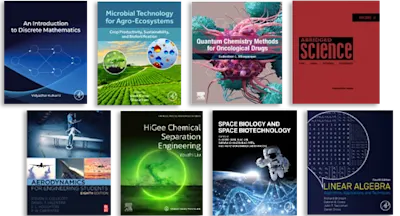
Boundary Value Problems and Partial Differential Equations
- 7th Edition - February 5, 2026
- Authors: Jonathan Mitchell, David L. Powers, Lynn Greenleaf, Matthew A. Beauregard
- Language: English
- Paperback ISBN:9 7 8 - 0 - 4 4 3 - 2 9 8 8 2 - 0
- eBook ISBN:9 7 8 - 0 - 4 4 3 - 2 9 8 8 3 - 7
For over fifty years, Boundary Value Problems and Partial Differential Equations, Seventh Edition has provided advanced students an accessible and practical introduction to derivi… Read more
Purchase options

For over fifty years, Boundary Value Problems and Partial Differential Equations, Seventh Edition has provided advanced students an accessible and practical introduction to deriving, solving, and interpreting explicit solutions involving partial differential equations with boundary and initial conditions. Fully revised and now in its Seventh Edition, this valued text aims to be comprehensive without affecting the accessibility and convenience of the original. The resource’s main tool is Fourier analysis, but the work covers other techniques, including Laplace transform, Fourier transform, numerical methods, characteristics, and separation of variables, as well, to provide well-rounded coverage. Mathematical modeling techniques are illustrated in derivations, which are widely used in engineering and science. In particular, this includes the modeling of heat distribution, a vibrating string or beam under various boundary conditions and constraints. New to this edition, the text also now uniquely discusses the beam equation. Throughout the text, examples and exercises have been included, pulled from the literature based on popular problems from engineering and science. These include some "outside-the-box" exercises at the end of each chapter, which provide challenging and thought-provoking practice that can also be used to promote classroom discussion. Chapters also include Projects, problems that synthesize or dig more deeply into the material that are slightly more involved than standard book exercises, and which are intended to support team solutions. Additional materials, exercises, animations, and more are also accessible to students via links and in-text QR codes to support practice and subject mastery.
- Introduces students to mathematical modeling leading to explicit solutions for ordinary and partial differential equations
- Covers a variety of methods including separation of variables, Laplace transforms, and numerical methods
- Contains 1000+ exercises and numerous examples and case studies drawn from published literature in Engineering and Science
- Offers online resources for instructors and students
One-semester or two-quarter course in partial differential equations given to third and fourth year students in engineering and science. Students in mathematics, physics, engineering taking courses in thermal dynamics, acoustics, electromagnetic wave theory and quantum mechanics
1. Ordinary Differential Equations
2. Fourier Series and Integrals
3. The Heat Equation
4. The Wave Equation
5. The Potential Equation
6. Higher Dimensions and Other Coordinates
7. Transform Methods 8. Numerical Methods
2. Fourier Series and Integrals
3. The Heat Equation
4. The Wave Equation
5. The Potential Equation
6. Higher Dimensions and Other Coordinates
7. Transform Methods 8. Numerical Methods
- Edition: 7
- Published: February 5, 2026
- Language: English
JM
Jonathan Mitchell
Jonathan Mitchell is an associate professor of mathematics at Stephen F. Austin State University (SFA). His research interests include nonlinear oscillators, epidemiological models, and delay differential equations. Dr Mitchell has facilitated dozens of undergraduate research projects in mathematics and mentored future educators.
Affiliations and expertise
Associate Professor of Mathematics, Stephen F. Austin State University (SFA)DP
David L. Powers
David Powers has taught applied mathematics for over 40 years. His research includes matrix theory, graph theory and applications to biochemistry and engineering.
Affiliations and expertise
Clarkson University, Potsdam, NY, USALG
Lynn Greenleaf
Lynn Greenleaf has worked as a Mission Control engineer on the early missions of NASA’s Space Shuttle, supported multiple space and ground simulation projects, and worked as a senior scientist on ballistic missile defense, including live tests in the Pacific. She recently retired from the Department of Mathematics at Stephen F. Austin State University in Nacogdoches, Texas. Her most recent research interests include mathematical simulation with a special focus on modeling violent storms such as tornadoes and hurricanes. She now lives in northern Colorado.
Affiliations and expertise
Formerly, Department of Mathematics, Stephen F. Austin State University, Nacogdoches, Texas, USAMB
Matthew A. Beauregard
Matthew Beauregard is a professor of mathematics at Stephen F. Austin State University (SFA). His research interests are in applied mathematics, particularly mathematical modeling and scientific computing. In this decade, he has mentored over 50 undergraduate students in undergraduate interdisciplinary research activities in applied mathematics.
Affiliations and expertise
Professor of Mathematics, Stephen F. Austin State University (SFA), USA